This 10-Minute Balance Routine Prevents Falls, Says Fitness Trainer

Maintaining proper balance becomes increasingly important as we age, yet many of us don't address it until after experiencing a fall. Drew Hopper, a fitness coach, has developed a straightforward 10-minute routine specifically designed to improve stability and prevent accidents. "Balance training is preventative medicine that anyone can practice at home," says Drew. "Just a few minutes daily creates a foundation of stability that carries over into everything you do." Follow this expert-designed workout to build confidence in your movements and reduce your risk of falls.
The Science Behind Balance and Fall Prevention
Falls remain one of the leading causes of injury, especially among older adults. "Our balance systems naturally decline with age, but we can absolutely slow and even reverse that process with proper training," Drew explains in his video. The exercises in this routine target multiple balance systems simultaneously—visual, vestibular (inner ear), and proprioceptive (body awareness)—creating comprehensive stability that translates to everyday movements.
RELATED: 5-Minute Walking Workouts for Women Over 40 to Burn Fat at Home
No Special Equipment Required
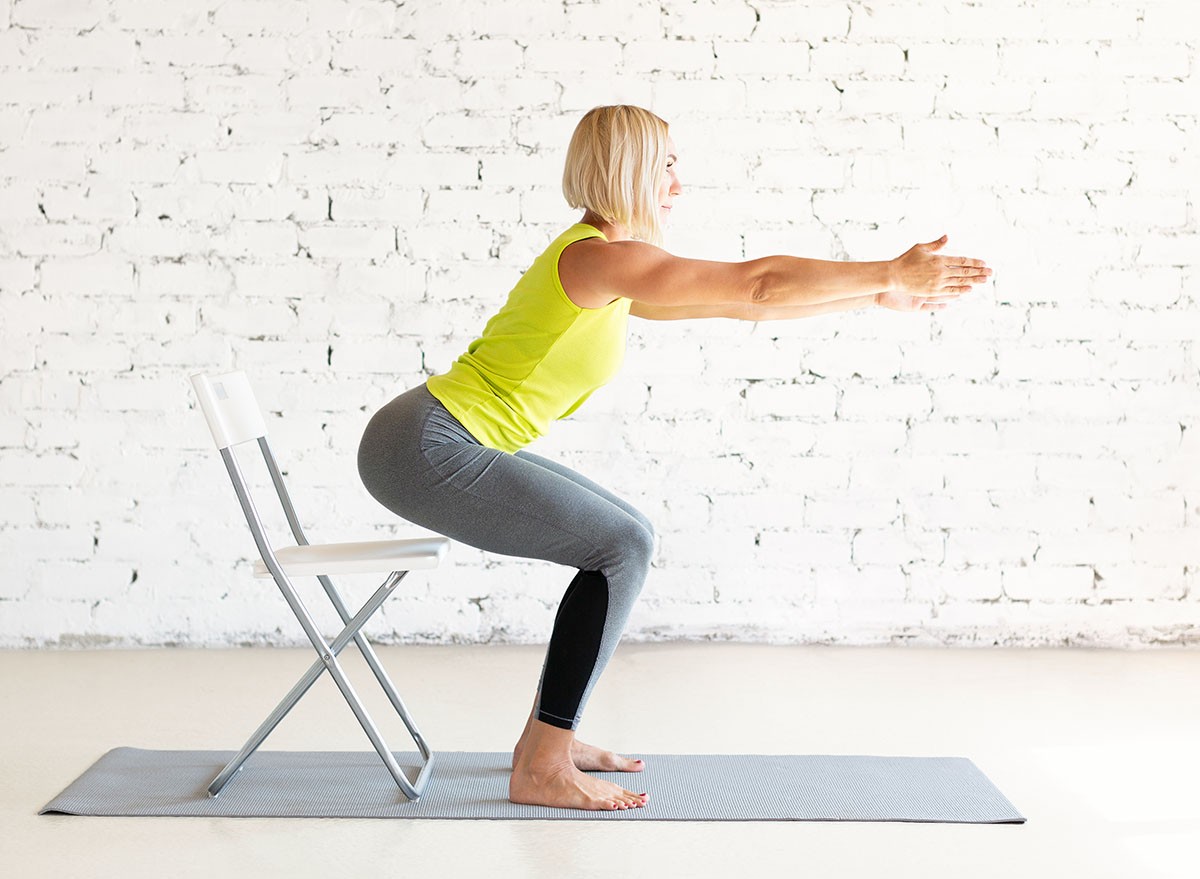
One of the most appealing aspects of this balance routine is its accessibility. "You don't need a gym membership or fancy equipment to prevent falls," says Drew. "Just clear a small space in your living room and perhaps have a sturdy chair nearby for support when first starting out." This approach removes common barriers to exercise and makes consistent practice achievable for everyone.
Beginning with Proper Preparation
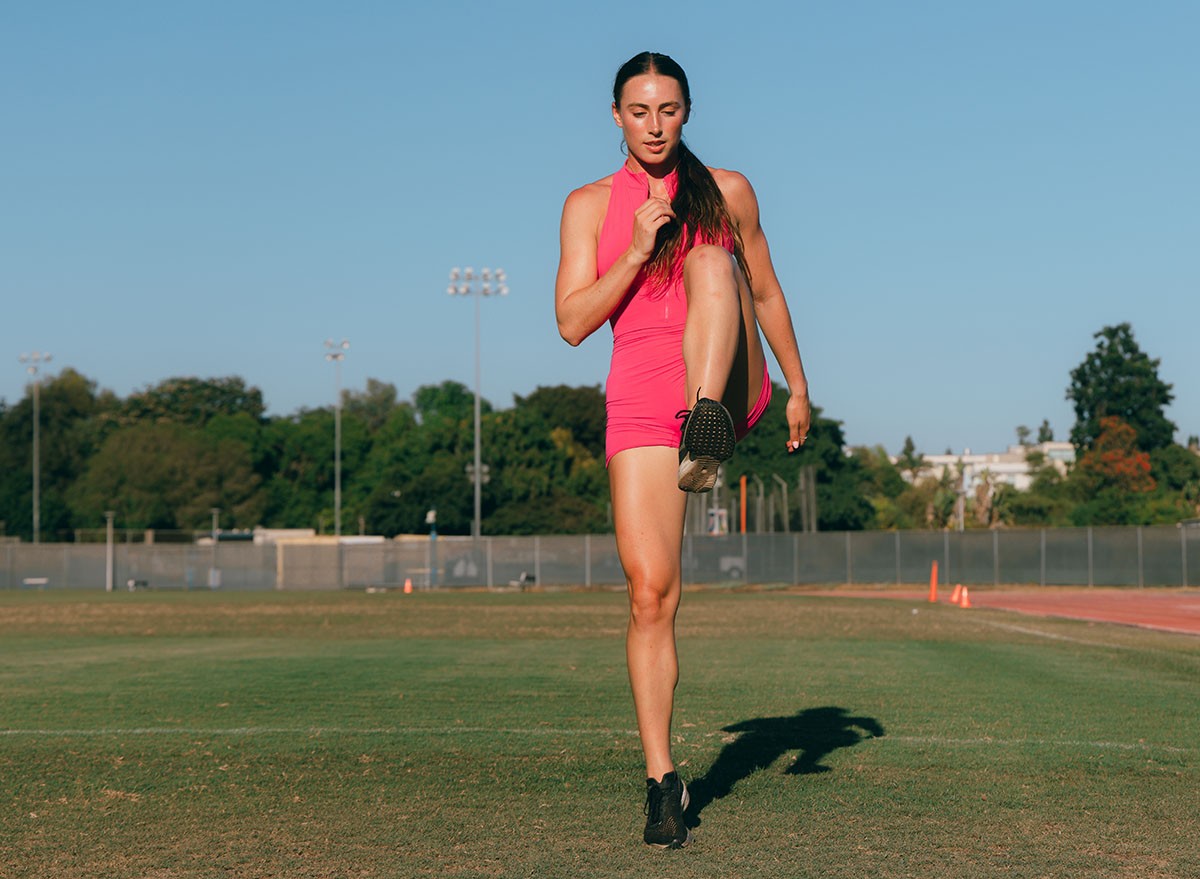
The workout starts with gentle movement to prepare your balance systems. "Never challenge your balance when your body is cold," Drew cautions. Begin with one minute of marching in place, gradually lifting your knees higher as you warm up. This activates your core muscles—what Drew calls "the command center for stability"—and prepares your nervous system for the more challenging exercises ahead.
Core Stability Exercises That Prevent Falls
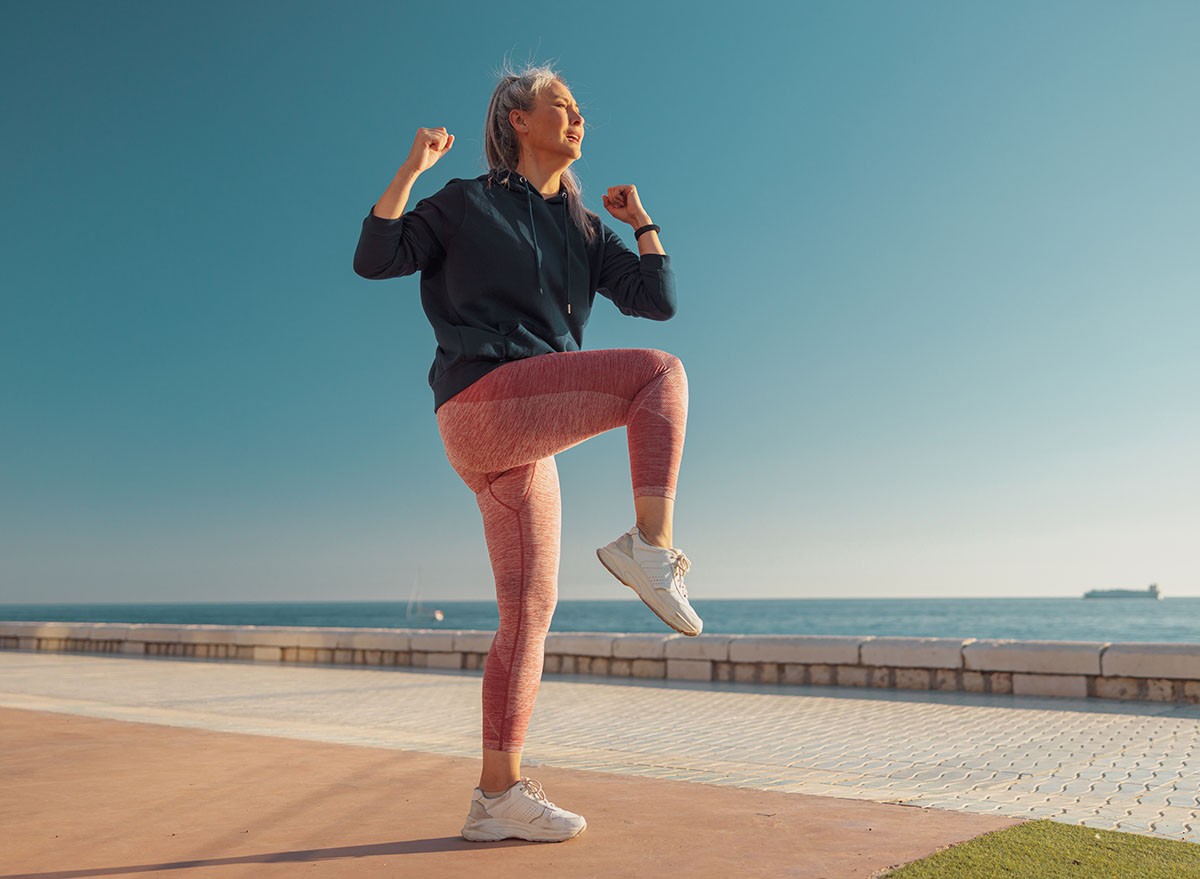
The central portion of the routine focuses on movements that directly translate to fall prevention. Start with standing leg lifts, raising one knee slowly while maintaining upright posture. "This exercise mimics the moment when you're stepping over an obstacle or up stairs," Drew notes. "Practicing it in a controlled environment develops the stability needed for these daily challenges." Follow with heel-to-toe walking, which Drew identifies as "particularly effective for preventing sideways falls."
Progressive Balance Challenges
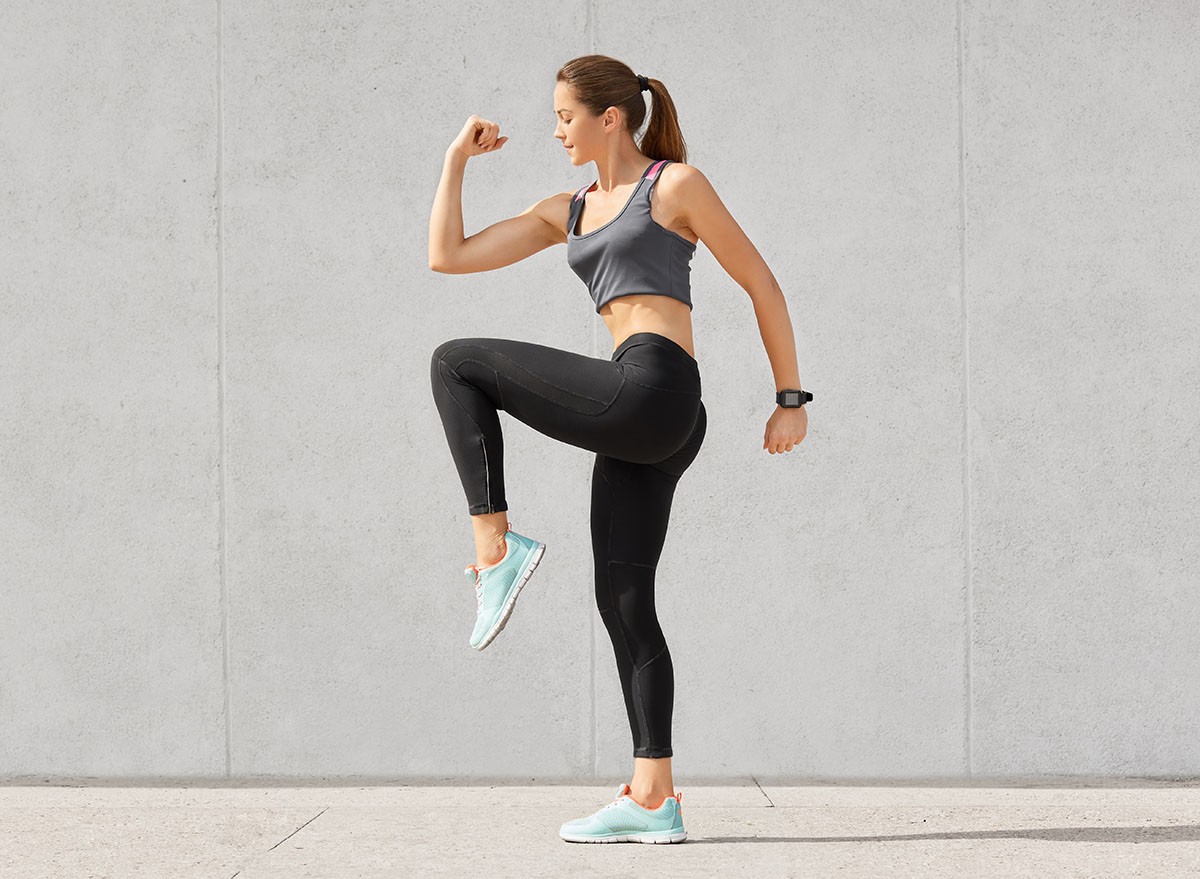
As your stability improves, gradually increase the difficulty of the exercises. "Progress happens at the edge of your comfort zone," Drew reminds us. The routine includes single-leg standing exercises that can be modified by closing your eyes or standing on a softer surface. These variations force your body to adapt and strengthen the neural pathways that control balance. According to Drew, "Just three sessions weekly shows measurable improvement within a month."
RELATED: I Got My Best Body After 50 and Here's How You Can, Too
Recovery and Integration
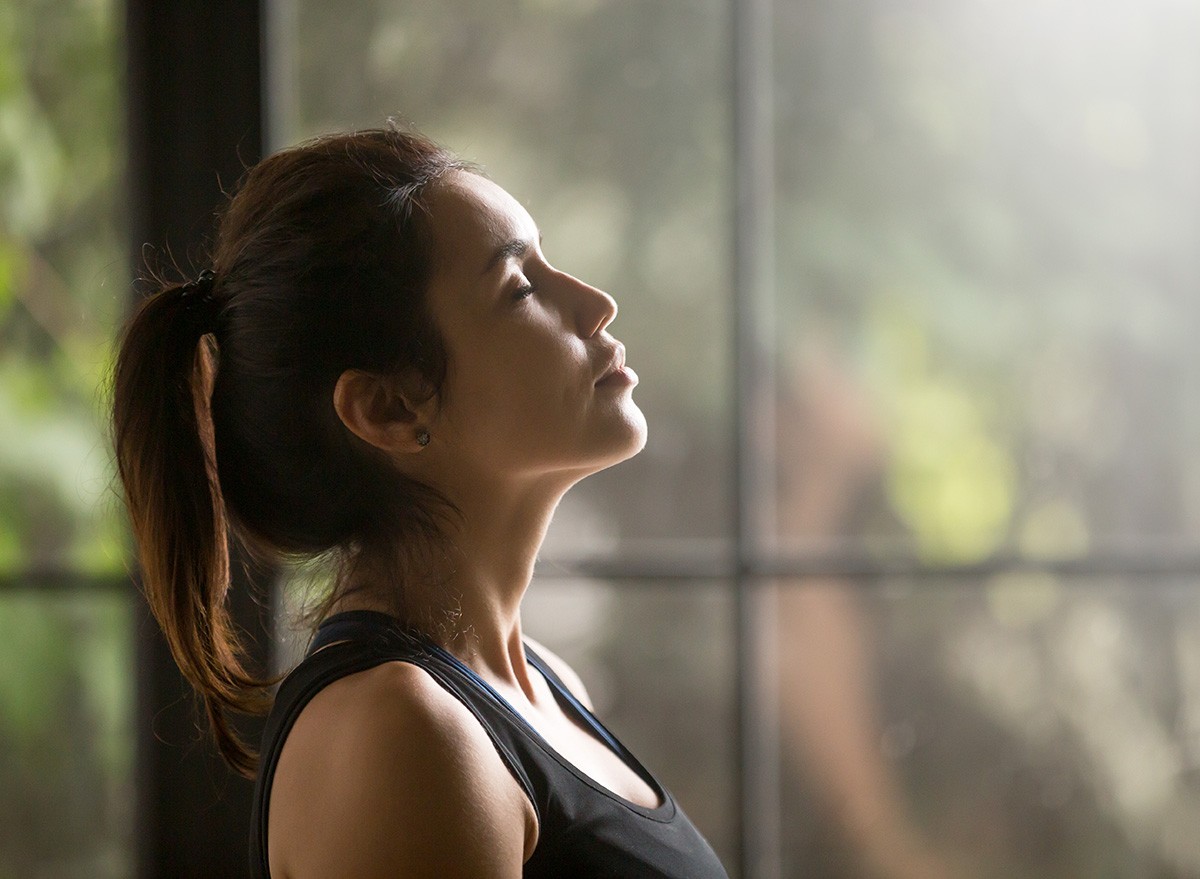
The final phase helps your body integrate the new stability patterns. "The cool-down is when your nervous system cements what it's learned," says Drew. Finish with slow, controlled breathing while gently stretching the ankles, calves, and hips—all critical areas for maintaining stability and preventing falls in everyday situations.
Consistency Creates Results
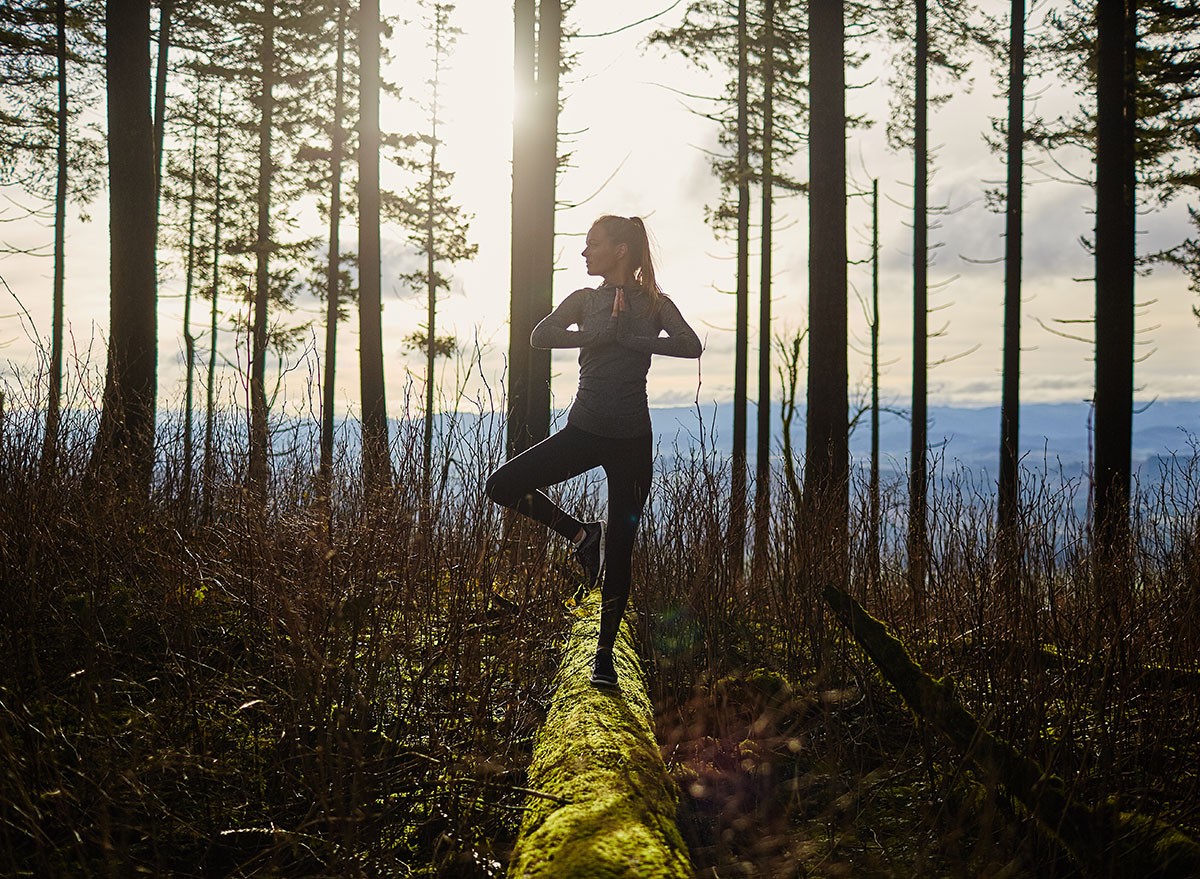
The true power of this routine comes from regular practice. "Even at just 10 minutes per session, consistency transforms your stability," Drew shares. He recommends tracking your progress by noting improvements in how long you can hold positions or how confident you feel during challenging movements. Most importantly, you'll notice fewer close calls and a greater sense of security during daily activities.
By investing just 10 minutes a few times weekly in this expert-designed routine, you're taking proactive steps to maintain independence and prevent one of the most common causes of injury. Your future self will thank you for the investment in a better balance today. And if you enjoyed this article, don't miss 12-3-30 Walking Method: 20 Proven Tips to Lose Weight Faster




